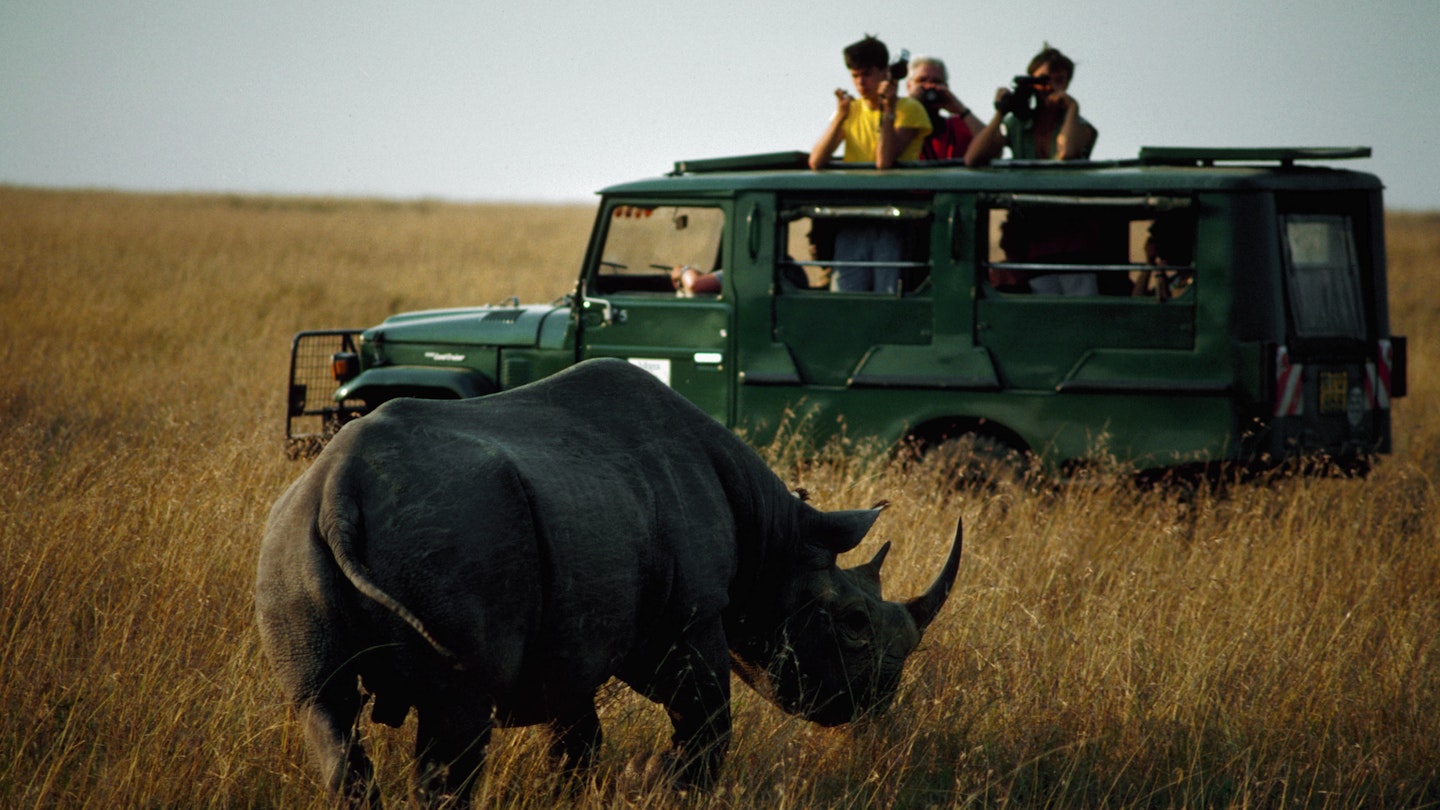Experience the Majestic African Rhino
Under threat of extinction and a testament to the resilience of wild creatures in wild places, the African rhino is an enduring symbol of the beautiful strangeness of the natural world.
If you see this member of the Big Five in the wilds of Africa, you’ve hit the safari jackpot. In celebration of World Rhino Day on September 22, we explore ways to encounter these magnificent creatures.
Rhinos: a picture painted in black and white
When it comes to land animals, only elephants are bigger than rhinos. Rhinos have very few natural enemies, apart from humankind, and they’re so large that no other predator can bring down an adult rhino; lions and other large predators do occasionally kill baby rhinos.
There are two main species of African rhinoceros: black and white, which are named for their lip shape rather than color. The term ‘white’ actually comes from wijde (wide), a Boer term referencing the fatter-lipped white rhino.

Black rhinos are smaller than white rhinos, but adult black rhinos can weigh between 700kg and 1400kg. Being browsers, they consume leaves, twigs, and branches and are commonly found in thickets and woodlands. In contrast, the considerably larger white rhino can weigh up to 3600kg and prefers grazing on short grasses in savannah plains.
Rhino mothers give birth after pregnant periods of around 15 or 16 months. Baby rhinos depend on their mother’s milk for up to a year post-birth, and in the wild, they can live for up to 50 years if conditions allow.
A social life
Although rhinos inhabit defined territories, encounters between them are rare in areas with high density; however, males will occasionally attack each other. In Namibia’s Etosha National Park, rhinos often congregate at waterholes after dark. Female rhinos tend to live in close proximity to each other, although the core of the family dynamic is centered around a mother and her young.

A rhino’s horn
The horn of a rhino is made from keratin, the same protein found in human hair and nails. This valuable trophy has been sought after by poachers due to its use in traditional Asian medicine, including as an aphrodisiac. Its lore stretches back centuries, with ancient cultures attributing various mystical properties to it.
Current estimates suggest that a single rhino horn can fetch up to US$65,000 on the black market, with some prices reaching as high as US$300,000 in recent years.
The best places to see rhinos on safari
Once widespread across Africa, rhinos now primarily inhabit Southern and East Africa, where intensive conservation efforts are helping to reestablish populations in areas they were previously driven from.
South Africa
With 90% of all white rhinos residing in South Africa, it is the ideal starting point for those looking to see these species. Sightings are common in Kruger National Park and surrounding reserves such as Hluhluwe-iMfolozi Park and Madikwe Game Reserve.
Namibia
Visit the waterholes of Etosha National Park for excellent black rhino sightings, particularly at night. Damaraland offers a remote, alternative experience ripe for exploration.
Kenya
Kenya harbors the largest population of black rhinos. Key locations to spot them include the Laikipia Plateau, particularly at Ol Pejeta Conservancy and Lewa Wildlife Conservancy. Nairobi National Park and the assorted national parks of Tsavo West, Meru, Aberdare, and Lake Nakuru are also worth visiting.
Tanzania
The Ngorongoro Conservation Area is home to Tanzania’s densest black rhino population, with additional rhinos found in Serengeti National Park.
Botswana
Encountering rhinos in the Okavango Delta is uncommon, but visiting Khama Rhino Sanctuary might yield sightings.
Zambia
North Luangwa National Park is a promising site to find black rhinos in Zambia.
Zimbabwe
Matobo National Park presents a rare chance to catch glimpses of both white and black rhinos in southern Africa.
eSwatini (formerly Swaziland)
The magnificent Mkhaya Game Reserve hosts impressive populations of both black and white rhinos.

Are Rhinos in peril?
The story of the white rhino represents one of conservation’s most significant successes, rebounding from fewer than 100 wild individuals in the early 20th century to an estimated 17,212 and 18,915 today. South Africa has the majority of these surviving southern white rhinos, which are now classified as Near Threatened.
Conversely, the northern white rhino subspecies is on the brink of extinction, with only two females alive at Ol Pejeta Conservancy in Kenya after the death of the last male, Sudan, in March 2018.
Similarly, while the black rhino has seen a notable recovery, it still remains Critically Endangered, with current estimates indicating a population of between 5,366 and 5,627 individuals.
Despite some controversies over hunting licenses to ensure funding for conservation, collaborative efforts are essential in protecting these magnificent creatures for future generations.




